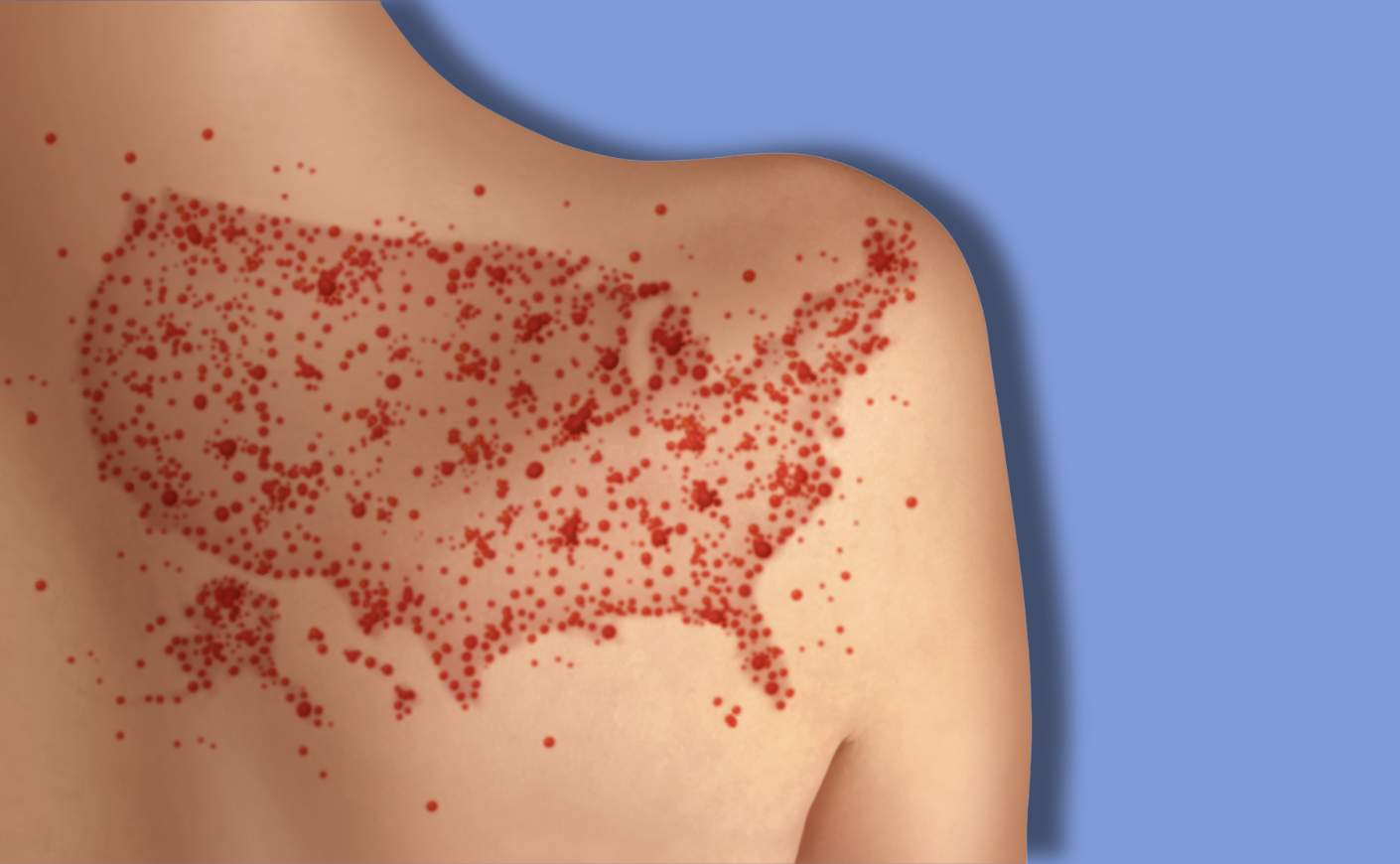Measles is on the move again: More than 700 cases have been confirmed in 25 states as of Friday. Health officials have reported outbreaks of the highly contagious virus — known for causing high fever, cough, and a telltale rash — in states from Arizona and New Mexico to Hawaii.
The surge can be traced back to January, when the first cases were reported in West Texas. Though measles was declared “eliminated” in the U.S. in 2000 — meaning there was no continuous, year-round transmission — this resurgence is tied to falling vaccination rates, particularly among children.
So what qualifies as an outbreak? The CDC defines it as three or more related cases. As of Friday, the agency has identified seven clusters that meet that threshold in 2025.
Even if you’re vaccinated, the headlines are understandably alarming. Below, we break down where cases are rising — and whether it’s time to consider an updated vaccination.
Which states have the biggest measles outbreaks?
Texas has reported the largest measles outbreak in the country, with 541 confirmed cases as of Friday. According to the Texas Department of State Health Services, just 11 of those infected were vaccinated; the rest were either unvaccinated or had an unknown vaccination status.
New Mexico has the second-highest case count, with two new cases reported Friday, bringing the total to 58. Local health officials say genetic testing links the outbreak there to the one in Texas.
Kansas follows with 32 confirmed cases as of last Wednesday. A state health spokesperson told the Associated Press that the initial case was also genetically connected to the Texas and New Mexico outbreaks, though the exact route of exposure remains unclear.
Ohio has confirmed 20 cases so far. It’s not the state’s first brush with measles — an outbreak in 2022 infected 85 people.
Are there outbreaks in other states?
Beyond the major hotspots, the CDC has reported between one and 12 cases in a number of other states, including Alaska, Arkansas, California, Colorado, Florida, Georgia, Hawaii, Indiana, Kentucky, Maryland, Michigan, Minnesota, New Jersey, New York, Ohio, Oklahoma, Pennsylvania, Rhode Island, Tennessee, Vermont, and Washington.
How is Health Secretary Robert F. Kennedy Jr. responding to the outbreaks?
At first, Health Secretary Robert F. Kennedy Jr. — a longtime vaccine skeptic — dismissed the current measles outbreak as “not unusual” and tried to suggest the curve in Texas was flattening. But in a seeming reversal, he later voiced his strongest support yet for vaccination, telling CBS News last Wednesday: “The federal government’s position, my position, is that people should get the measles vaccine.”
This wasn’t the first time he’s publicly backed the shot. On April 6, Kennedy reiterated that “the most effective way to prevent the spread of measles is the MMR vaccine.” At the same time, some of his other messaging has raised eyebrows. In a follow-up post, he praised “two extraordinary healers” who treated children in Texas with budesonide, an anti-inflammatory steroid, and clarithromycin, an antibiotic — neither of which are recommended treatments for measles.
Kennedy has also advocated for the use of vitamin A under medical supervision, a move that has raised concerns among health experts who question its effectiveness.
The American Academy of Pediatrics has since pushed back, saying there is no scientific basis for these alternative treatments and reaffirming that “the most important way to combat measles is through prevention with the MMR [measles, mumps, and rubella] vaccine.”
Should adults get a measles booster?
If you’ve already received the measles, mumps, and rubella (MMR) vaccine but live in one of the high-risk areas mentioned above, health experts say a booster could be worth considering.
Scott Weaver, chair of the Global Virus Network, told the Associated Press this includes people living with someone who has measles or those with underlying medical conditions that make them more vulnerable to respiratory infections. The CDC backs this up, noting that an additional MMR shot is safe if there’s concern about waning immunity in your community. The agency also recommends that anyone vaccinated before 1968 receive at least one updated dose, because earlier versions of the vaccine were less effective.
When in doubt, talk to your doctor — especially if you’re in a high-risk area or unsure of your vaccination history.









